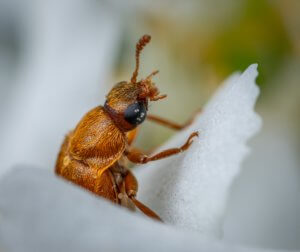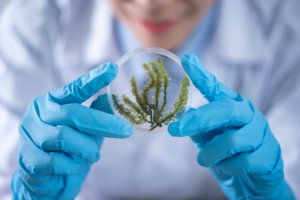
11 fun 3rd grade Science projects
3rd-grade science projects are the perfect way for 3rd graders to have fun understanding and exploring science, technology, engineering, and math (STEM). What is better than science? Hands-on science! Lessons and concepts are much easier to understand when kids can see them in action and take part in creating them themselves. Here are some 3rd grade science projects that your kids can do at home, or show off in the classroom.
List of 3 rd grade science projects:
Buoyancy vs water balloons
Learn about and test out buoyancy with some water balloons! All you need is a bucket, some water, water balloons and other liquids you want to test out.
Science explained: Buoyancy is the ability of objects to float. It mainly depends on 2 factors, how much water the object touches/moves and the density of that object. The more water an object touches/moves and the less dense it is, the more likely the object will float.
If you’re ready for science, head over to 123 Homeschool 4 Me to look at the instructions. With bright pictures and bold subheadings, these instructions are super easy to follow and are explained extraordinarily well.
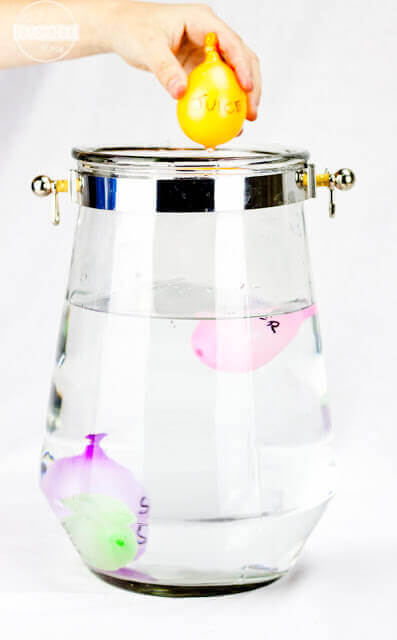
Make dye with nature
Turn some plants into dye with science! In this activity, kids will separate components within plants to make some dye! For instructions on how to do this awesome experiment, head over to Science Buddies. Science Buddies has easy to follow instructions with images to guide kids through the experiment. The best thing is the tabs which let you easily navigate through the site.
Science explained: Paper chromatography is a way scientists use to separate a mixture into various components. They do this by putting all the components in a single spot on a strip of paper. Then liquid runs up the paper. When liquid runs up the paper, it takes part of the mixture with it. Think of lolly flavours, some people like grape flavours more while some people like coke flavours more. In the same way, each component has a different attraction for the paper and the liquid. Some are more attracted to the paper and some are more attracted to the liquid. This means that when the components move up with the liquid, some will move faster because it’s moving closer with the liquid, while others move slower since it wants to stay with the paper.
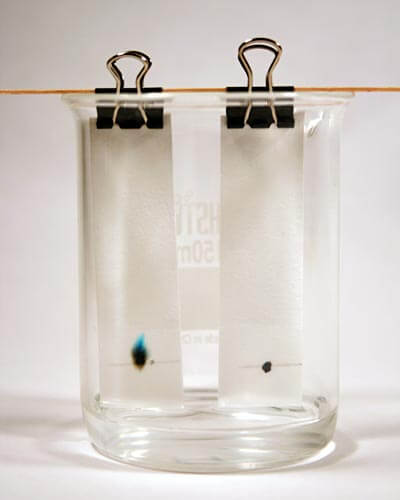
Crystal leafs
In this activity, not only do kids get to learn about supersaturation, but they also get to make some amazing decorations. So gather up your leaves and salt and head over to this site for the instructions:
Steamsational is filled with pictures and bold headings make it super easy to follow the instructions.
Science Explained: when a solution (water in this case) becomes supersaturated with salt, it means that there’s too much salt in the water and not all of it can be dissolved. This means that when the water evaporates, the salt crystals will cling to each other and form larger squares of salt. This is what causes the beautiful crystal structures to form.
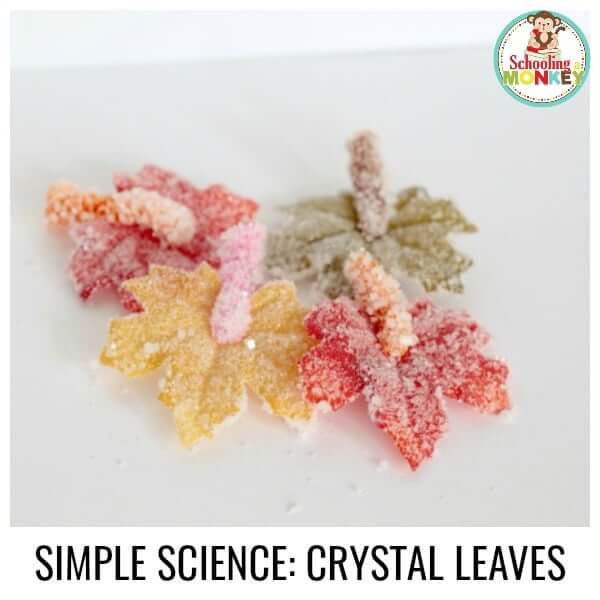
Whistle with water
In this quick and easy experiment, kids can learn about the science behind sound. All they need is a glass of water, some straws and 10 minutes. Go to this link for the instructions on how to conduct the activity. My Baba is filled with step by step instructions with images to accompany each step. This makes it super easy for kids to follow and understand.
Science Explained: when you blow into the straw, this vibrates the air inside it. The straw in the water is filled with both water and air. When the air vibrates, it creates a whistling sound. The pitch you hear depends on how much air is inside the straw. The more air there is, the lower the pitch will be.

Compost in a bottle
Compost, the place where science and nature meets. In this activity, kids will learn about the decomposition of food and the importance and nutritional values of composting. All you need is an empty, clear bottle, some soil and food you wish to compost. Busy Mommy Media provides easy step-by-step instructions with visual images for a bright educational activity.
What will you put in your compost? If you’re not sure if you can compost it, or don’t know what to put into your bin, head over to this site to find out.
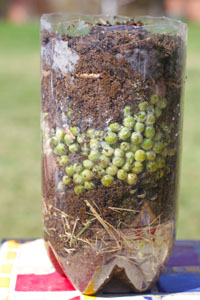
Crayons or rocks?
Create your own rocks from crayons! In this activity, kids will learn about the effects of heat and pressure on crayons and about the different types of rocks. They can then demonstrate this knowledge as an awesome science project. If you’re ready to learn about what type of rock gets formed under different temperatures and pressures, head over to The Owl Teacher! Not only are the instructions simple and detailed, but they also provide a great explanation of each type of rock.
TIP: use different coloured crayons for a more colourful experience.
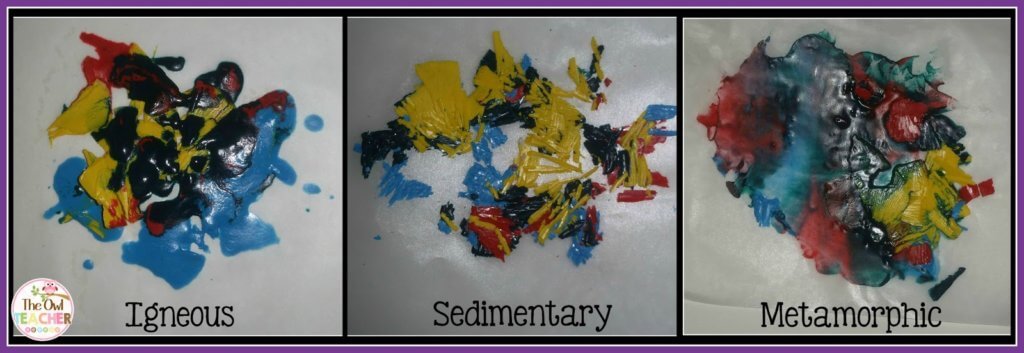
Fit through a card
Do you think you can squeeze your entire body through an index card? In this easy activity, kids can learn about surface area and how to manipulate it.
TIP: To get a longer ring, make the cuts closer together. But be careful to not make it too close, because a longer ring, also means a thinner and more fragile ring. Head over to Steve Spangler Science for step-by-step instructions and a video demonstration. The best part is, there’s a lovely background tune to go with it.
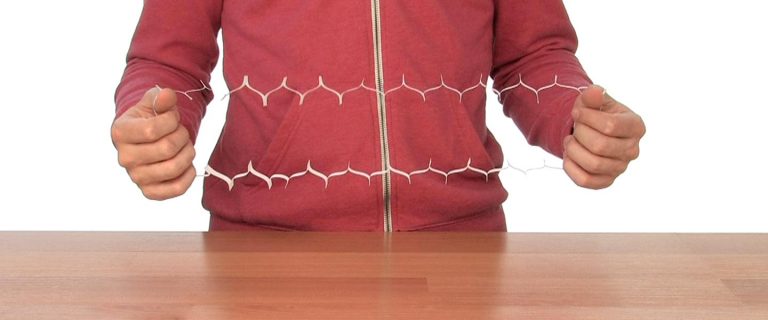
Make ice cream in a bag
What’s a better use of science than to make a tasty treat with it? In this activity, kids can get moving and shake up their ice cream while learning about heating, cooling and condensation. Making some ice cream for a science project seems like a winner to me!
Science Explained: adding salt to the ice decreases the melting point of the ice which means it will melt easier. When the ice melts, this pulls the heat away from the ingredients in the bag which cools them very quickly. This quick cooling freezes the ingredients which end up making ice cream!
With step-by-step instructions and images, these instructions from Delish are super easy to follow and give a visual aid. And for those who don’t feel like reading, there’s an instructional video too! Looking at this activity sparks a craving for ice cream!
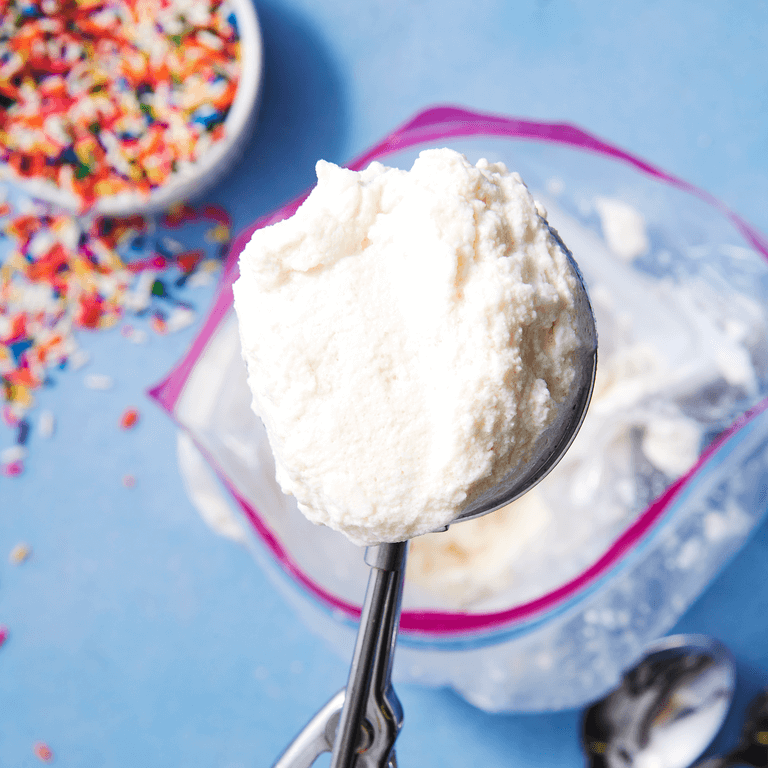
Edible paper
The best kind of science projects is the ones you can eat. In this activity, kids will learn how to make edible paper and the concepts behind the structure of the paper. If you’re ready to make some edible paper, head over to Science Buddies for the instructions. This site not only has very thorough instructions, but it also explains all the science and key terms giving kids a fun and educational experience. To top it off, there’s also a video demonstration to watch! What can you use your edible paper for?
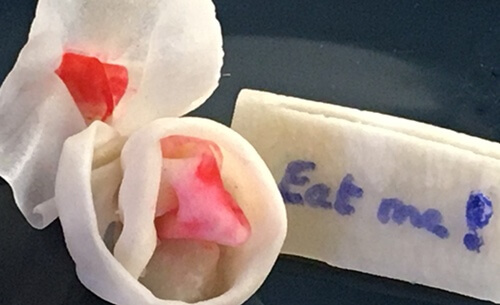
Disappearing eggshell
Make an eggshell disappear by just using vinegar! In this activity, kids will learn about the reaction between calcium carbonate in eggshells and vinegar. If you’re ready for some science, head over to Premeditated Leftovers for detailed instructions. This has simple instructions that are easy to follow and is filled with fun pictures detailing the process.
Science Explained: eggshells contain a substance known as calcium carbonate. When you add calcium carbonate and vinegar, the calcium carbonate will dissolve into calcium ions and carbon dioxide gas. This gas is what makes the bubbles you see during the experiment.

Play-dough core
Learn about the earth’s core through some fun with play dough. In this activity, kids will do some ‘core sampling’ with see-through straws to investigate the layers of the core. All you need is some straws, a container and different coloured playdough. For a colourful description of how to conduct this activity, head over to Line upon Line Learning. How detail will your sampling be?

Conclusion:
Hopefully, after trying these fun and easy 3rd-grade science projects, kids will have an awesome science project to demonstrate to their friends and family. If you have any cool ideas of your own, don’t forget to share them with us! Let us know in the comments which one was your personal favourite.
Interested in keeping kids occupied screen free at home? Signup to InquiBox and receive a curated set of activities each month delivered to your home.




